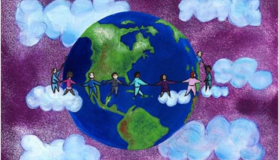1. Dialects (textbook p. 150)
A dialect is a form of language peculiar to a group of people, as distinguished from the literary language of the whole people.
2. Sociolects ( textbook p. 151)
A sociolect is a social dialect referring to a particular social class. Accent is an important marker of sociolect.
3. Pidgin (textbook p. 152)
A pidgin is a special language variety that mixes or blends languages for restricted purposes such as trading.
4. Lingua Franca (textbook p. 153)
A Lingua Franca is also used for communication purposes between different groups of people, each speaking a different language. It is views as an international means of communication and holds prestige among different groups of people.
5. Taboo (textbbook p. 154)
It refers to a set of behaviors that should be avoided because they are offensive and impolite.
6. Euphemism (textbook p. 154)
It is the linguistic counterpart of taboos because it substitutes the offensive and disturbing vocabulary.
7. Jargon (textbook p. 155)
It refers to the special or technical vocabularies developed to meet the special needs of particular professions such as medicine and law.


